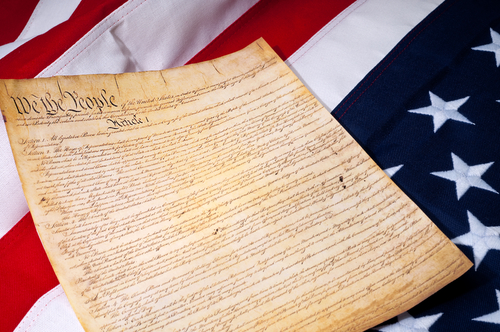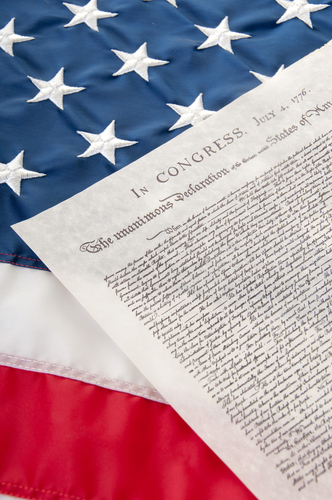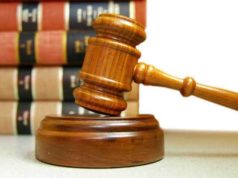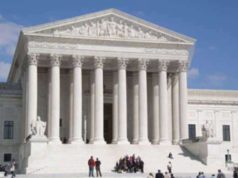
The Second Amendment: Understanding Its Role in American Society
The Second Amendment to the United States Constitution is one of the most debated and controversial topics in American political discourse. The amendment provides citizens with the right to bear arms, but interpretation of its language, intent, and applicability has been a source of much controversy. In this article, we will discuss the details of the Second Amendment, its origins, and the evolution of its interpretation.
The Text of the Second Amendment
The Second Amendment was ratified on December 15, 1791, along with the rest of the Bill of Rights, and reads as follows:
“A well-regulated militia, being necessary to the security of a free state, the right of the people to keep and bear arms, shall not be infringed.”
The second amendment has been a source of much debate and raises questions about the individual’s right to bear arms, as well as providing an understanding of the context and times in which it was written.
Origins of the Second Amendment
The Second Amendment was a response to the concern of many American colonists who had just fought a war for independence and recognized the need for a well-armed citizenry to defend against foreign invasion and domestic tyranny. They believed that a well-regulated militia could provide a counterbalance to the standing army and the government, ensuring that the government did not become too powerful and prevent citizens from enjoying their rights and freedoms.
The Evolution of Interpretation
The Second Amendment has been subject to much interpretation over the years, leading to a variety of viewpoints. Two significant interpretations currently exist; a collective right interpretation and an individual right interpretation.
The collective right interpretation states that the Second Amendment protects the collective right of citizens to maintain a well-armed militia and is limited to that right. They argue that the right to bear arms applies only in the context of a well-regulated militia and does not necessarily extend to individual citizens.
On the other hand, the individual right interpretation states that the Second Amendment establishes that individuals have the right to keep and bear arms for self-defense. They argue that the language “the right of the people to keep and bear arms” shows the original meaning of the amendment was to protect an individual’s right to possession of firearms and not just for use by an organized militia.
Government Regulation and Interpretation
The Second Amendment and its interpretation continue to be major topics of discussion in the US political arena. The government at both the state and federal level regulate the legal bearing of arms, including licensing and registration of gun owners, background checks, and the prohibition of certain types of weapons. However, regulation sometimes encounters legal challenges that speak to the heart of what the Amendment really intends.
Conclusion
The Second Amendment to the United States Constitution remains an important and contentious issue for Americans today. While the amendment was written to ensure protection against systemic tyranny, its interpretation has been challenged, with those who support the collective right interpretation encourage gun control by increased regulations. Those who support the individual right interpretation, meanwhile, demand more freedom to bear arms under certain circumstances. Ultimately, we can anticipate further debate as individuals decide what direction to take on this topic proposed by the Constitution.
The Second Amendment has been one that has been under much scrutiny and is the topic of controversy in recent years. Included in the Bill of Rights, the Second Amendment protects the United States citizens’ right to keep and bear arms.
The interpretation and application into legislature of the Second Amendment has been an issue that has been met with disagreement and varying degrees of understanding. The issue of gun control has been the subject of heated debates.
Regardless of the current issues of controversy surrounding the Second Amendment, it has, at its core, the protection of the individual in terms of the self, property, and commonwealth. American history has provided for a keen association with firearms and the United States.
In essence, firearms have been a tool that has been employed to forge some of the most important aspects of American society–namely, the creation of the United States itself. The Second Amendment not only protects a basic human and civil right, but in essence, also protects an important aspect of American folklore and culture.
When first enacted, the Second Amendment was considered as an important protection from the unfair and undemocratic imposition upon the people. Along with this view, other purposes under the Second Amendment include participation in law enforcement, the practice of the natural right of self-defense, and deterring invasions and uprising. However, even though these purposes still have applications in modern American society, the issue of firearms and crime in the United States has made it necessary to re-evaluate how the Second Amendment, as it originally prescribed, applies today (See Also: Gun Laws: Guns and Crime Rate; Gun Laws: Reform Movements and Ideas).


























